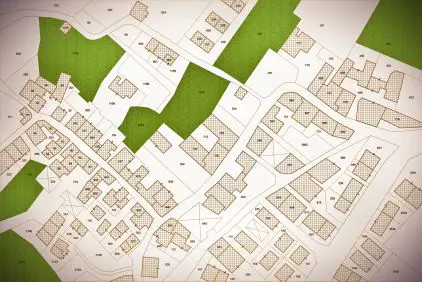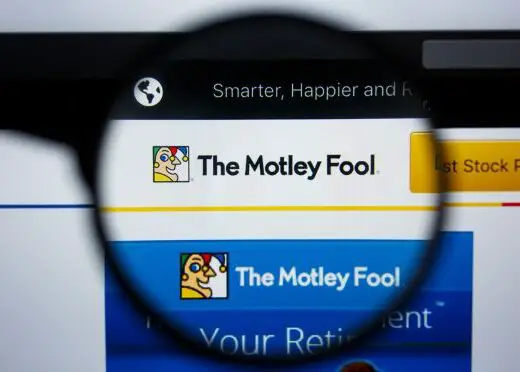
CommonCentsMom.com is advertiser-supported: we may earn compensation from the products and offers mentioned in this article. However, any expressed opinions are our own and aren't influenced by compensation. The contents of the CommonCentsMom.com website, such as text, graphics, images, and other material contained on this site (“Content”) are for informational purposes only. The Content is not intended to be a substitute for professional financial or legal advice. Always seek the advice of your Financial Advisor, CPA and Lawyer with any questions you may have regarding your situation. Never disregard professional advice or delay in seeking it because of something you have read on this website!
Free land in the United States has been the goal of many since colonial times. States have given land to people for no cost and for no strings attached. There are a few ways that states and cities give away land. The most common way is through easements.
Easements are basically a state’s granting to a person or group of people the right to build something on public land. An easement is only valid if it is recorded in the county deed records in which the property is located, not just anywhere but specifically in the county where the property is located.
Another way that states give away land without cost or strings attached is through grants-in-aid (GIA). Grants-in-aid allow a city to pay for specific projects with tax dollars rather than using general tax money on other projects. This allows governments to direct their resources towards a specific project and therefore make more money overall by doing so.
For example, you may have heard about how cities are using GIA’s for things such as stadiums, roads, or bridges; some governments even use GIA’s for things like police cars, fire trucks, and ambulances because they think it makes sense to spend money on these things instead of other things that could be done with general tax money.
Finally, the last way that states give away land without cost or strings attached is through taking it back. A state can take land back by selling it to private entities, not just citizens but to anyone who wants to buy it.
The amount of money that a state can sell the land for depends on how much it has paid in taxes over the years, which is usually more than what the land is worth because it’s in an undesirable location or because there is no development going on there. States can also take land back if they feel that doing so would be good for them economically or politically.

To give away land, states and cities do not need to get a law passed. Instead, they can just take the steps to give away land through the normal processes that governments use to pass laws and regulations. When a city gives away land for free or for no cost, it usually is because there is no other way to do so.
If a city does not have money available to buy the land, it has no choice but to let someone take it because they don’t have any money at all. If a state wants to sell off its excess land without charging money for it, they need some way of making the land attractive enough for someone else to buy it. One way that states can do this is by giving away land or easements for free or for little cost.
Giving people or companies free access or use of state-owned land gives them something in return and therefore makes them want the property more than anything else. It’s almost like a government-run yard sale where everything is free and most people come just to look at what’s there rather than buy anything because nothing is going on anyway!
States are taking advantage of this behavior by giving away as much of their excess property as possible with very little in return from the people or companies who are taking the land.
Below are some examples of how states and cities give away land without cost or strings attached.
The first one is from South Dakota, a state that has been very open about giving away land to private companies and individuals. Here’s what the state’s Department of Transportation had to say about the issue in their official blog: “The most obvious way for us to get rid of this surplus property is by selling it to another agency or entity. We have no desire to do this, but given our current financial constraints, we must.”
This statement can be interpreted in two ways. First, the state may have no desire to sell the land because they have already paid so much money for it and there’s nothing else they can do with it. Or second, the state may want someone else to take it because if they don’t sell it then they will not get any money at all for the property.
This next example is from New Jersey where their state legislature decided that cities would give away some of their excess land without charging money for it by creating a fund called the “Citizens’ Land Trust Fund.” According to their official website, this fund is “a tax-exempt, charitable fund designed to enable cities and towns to voluntarily give away surplus land.”
New Jersey has given away over $100 million in land without charging any money for it. The next example is from the city of Washington D.C., where they have given away more than 40 acres of public land to developers and businesses who are interested in building things on them. The city council said that they did this because “the Council has become aware of a number of developers and others who have expressed interest in obtaining such properties as a means of enhancing their business opportunities.”
It’s interesting to note that these people were able to build things on these public lands without having to pay anything for them or even get a permit for the construction! It’s also interesting that this land was not being used for something other than the building of private property; it was being used specifically for building private property.
This shows that states and cities can take back land by selling it or by giving it away, but it also shows how much property there is that they cannot sell or give away at all because there is no way they can make money off of it!






